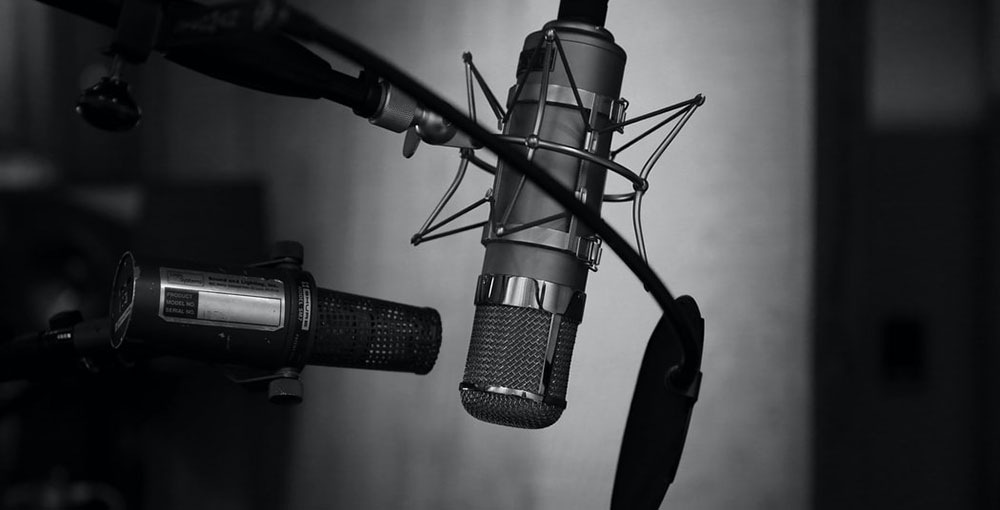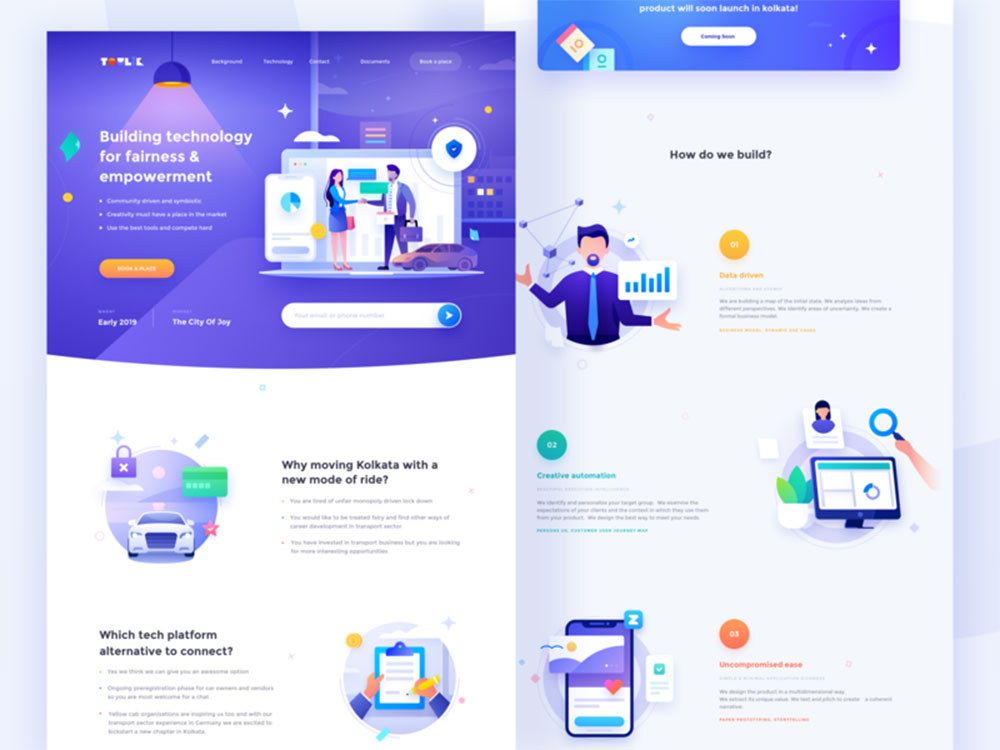How to Launch A Podcast For Designers

Did you know that 70% of Americans have heard of podcasts and 51% have listened to one? Furthermore, 32% listen to a podcast at least once a month. Podcasting is a huge, and growing, arena of creative expression, entertainment and marketing.

Source: Rain News
How to start a podcast? If you’re thinking about launching a podcast for designers, there are two things you need to know before you do anything else:
First, podcasting is hard work. A lot of preparation that goes into each episode, from choosing the topic and inviting guests to recording, editing the audio and uploading the episode. You’ll typically need to allow at least a full working day to edit and clean up the audio, and that’s not including the time it takes to actually record.
Second, podcasting doesn’t pay for itself, at least in the beginning. It has to be a passion project, because if you expect it to be a quick revenue generator then you will be disappointed.
So why bother starting a podcast?
If you are able to attract both great guests and loyal listeners, a podcast can raise your profile as a designer. It is a great promotional platform for agencies and freelancers trying to get their name out there.
Podcasting is also a great outlet for your creativity. It’s a fun way to share what you know and to learn from other designers and creatives.
If you’re still on board and want to learn how to launch a great design podcast, keep reading.
Plan ahead
Podcasting is more than just talking into a microphone then uploading the results to the internet! Unless you’re a megastar, people probably don’t want to listen to you talk random nonsense to yourself for thirty minutes.
Podcasting as a medium has the most in common with radio or television talk shows. And as with those formats, you need to plan everything thoroughly and well before you switch the microphone on and start talking.
Design is a broad field. As such, it’s better to narrow the scope of your podcast. You might focus on a specific design space (graphic design, software design or interior design, for example). Or you could get even more specific, for example focusing on the art of vintage typography.
As your podcast grows in popularity, you can always widen your scope and cover more topics to appeal to a larger audience.
Consider a Co-host
Can you think of anyone who would be a good co-host? Podcasting with another person is much easier, as it is more like having a conversation than talking to yourself!

Source: Resonate Recordings
Your podcast may also be more engaging and dynamic if it features more than one point of view. You and your co-host can discuss, debate and bounce off one another. A co-host can also help to ensure that you stay on topic and cover all the important points of your topic.
However, in order to have a successful co-hosting relationship, you have to make sure both of you are committed to the project. You’ll need to agree to a recording schedule and stick to it in order to get your episodes out on time. You will also have to agree on a fair division of the additional labour of podcasting – who will edit, promote and upload each episode? Who will manage your social media accounts and email address?
If you’d rather go it alone without a co-host, that’s completely fine. Neither way is necessarily better.
Choose a podcast name
Now that you have a topic and perhaps a co-host, it’s time to name your podcast.
The name should reflect what your podcast is all about. It might be tempting to give in to vanity and name the show after yourself, but this will make it hard for potential listeners to find unless you’re extremely well known. If your podcast deals with a niche topic, a name that’s relevant will make your podcast easier to search.
However, you also don’t want your podcast name to limit your potential range of topics. As we discussed earlier, you may wish to branch out beyond your original scope if your podcast becomes successful. The name of your podcast should be descriptive, but also leave space to allow you to expand into other topic areas and feature more guests.
Some popular podcasts with names I really like include By the Book (books and self-help), Safe For Work (career advice), and Decomposed (classical music). But just take a look at the Spotify podcast listings if you’re struggling for inspiration.

Source: Indiewire
Once you’ve chosen a podcast name, I suggest you grab the corresponding domain name for it too. If your podcast gets popular, you’ll want a dedicated website for it.
Choose your show format
Many experts suggest that your podcast should be X minutes long, or that it shouldn’t exceed Y minutes, or that the ideal length of your podcast should match the average driving time in your area. I don’t think this is necessarily good advice! I’ve listened to podcasts where five minutes is plenty, and podcasts where I’m still engaged and paying attention after two hours or more.
There are no hard and fast rules. What’s important is that you stay on topic, cover all of your relevant points, and don’t either ramble or race through your content in order to meet an arbitrary length requirement.
There are many different formats that you can use in your podcast, but many of the successful ones follow a format that looks something like this:
- Teaser: An intriguing snippet or two from the episode.
- Intro Music: Check out the section on choosing intro and outro music below.
- Welcome: This is where you welcome your listeners to the episode, introduce any guests, and give a short overview of the topic for the day.
- Ad Spot: If you have a show sponsor or affiliate advertiser.
- Main Content: This is where the meat of your topic goes. If you have a guest, this is where the interview will go.
- Call To Action: You might ask your subscribers to leave a review on iTunes, visit your website, or follow you on social media.
- Outro Music: This marks the end of the episode.
You can add sections to the sequence or mix them up, but consistency is good and following the same basic format helps your listeners know what to expect.
Do your homework
Now that you have your topic, maybe a co-host, a snappy and descriptive name, and a format outline, it’s time to lay the groundwork for your podcast.
Create cover art
Remember, you are hosting a podcast for and about designers, so your cover art needs to be good! If it’s shoddily designed or appears thrown together without thought, you lose credibility immediately.
Your cover is the first thing your potential listener sees. Think of it as an album cover or the front cover of a book. It should make sense, be relevant to your chosen topic, and reflect your personality.
Again, if you’re struggling to know where to start, look to your favourite podcasts for inspiration.

Source: Ossa Collective
Get a professional intro
A professional-sounding intro immediately gives your podcast an air of authority and credibility. You can either record it yourself, or hire a professional voiceover artist to do it for you.
Choose your intro and outro music
Unless you happen to also be part of a band or group that plays original music, you’ll need to source intro and outro music from a third party. You have a number of options: look for royalty-free music online, pay the royalties to use a well-known piece of music, ask an indie band or artist to sell you the rights to use one of their pieces, or commission an original piece.
When you’re starting out, I recommend taking the free or cheap route. Remember: podcasting is unlikely to pay for itself in the beginning.
Do not use someone else’s music without either paying for it or getting the artist’s permission. This is copyright infringement, better known as stealing, and can get you into a lot of trouble if you get found out.
Build your recording booth
Good quality audio is essential for a successful podcast. If you invest in one piece of kit, make it a good quality microphone. The Audio-Technica ATR2100x-USB is an affordable option which can be used with both USB ports and XLR connections, making it a popular microphone among podcasters.

Source: Freedom Podcasting
In addition to a microphone, you will need a quiet space where you can set up a basic recording booth. As much as possible, keep your children and pets away from your space while you’re recording!
If you don’t have a quiet area at home, try recording inside your car while it’s parked. The rubber gaskets around the doors and windows will keep most sound from getting in, and the chairs and carpets will absorb distracting sounds.
I know of one podcaster who started out by recording in her closet with the door closed! It worked surprisingly well until she could get a more professional set-up.
Make a wish-list of guests and start booking them
If you plan to do guest interviews, start thinking about who you’d like to invite to come on your show. The design community is pretty tight-knit and supportive, and many designers will be really flattered if you reach out to them for a potential interview. So don’t be afraid to ask!
To find people’s email address you can use a tool like Findemails.com. Your outreach email should introduce the podcast to your potential guests, tell your potential guest what you’re asking for, and say something about what you can offer them in return.
Here’s a template you could use:
Hey [name], I hope you’re well? I’m [name], the founder and host of the [podcast name] podcast. I’m reaching out because I really love your work [talk about 1 or 2 recent projects they’ve done that you admire]. I was hoping you might agree to be a guest on my show. I would need about an hour of your time to record an interview. This can be done from your home via a video conferencing tool. My podcast is quite new but I get around [X] downloads each episode and my listeners are very engaged. I’d love to share your work with them! Please let me know if you’re interested or have any questions. Thanks for your time and talk to you soon. [Name]
Send an initial email in plenty of time before you hope to record. Then, if your email tracking tool shows that they’ve opened your email but haven’t sent you a reply, send a polite follow-up. If you don’t get a reply a week or so after following up, take this as a no and move on to the next guest.
Well done – if you’re got this far, you’ve done your preparation! Now the really fun part begins.
Record and edit
All of your preparation has led you to this – the recording session for your first episode. You might feel a little nervous, but as long as you know your material and are confident you can deliver it clearly, you’re good to go.
Before you start recording your episode, make test recordings using different audio settings. There is nothing more annoying than having a re-record because something went wrong. I know of one podcasting duo who had to re-record not one but two complete episodes due to a tech malfunction!
To do a test recording, speak into the microphone for around 30 seconds then play it back to ensure all is working as it should. If your episode has a guest, make sure they can also be heard clearly and that their audio levels are well matched to yours.
Podcasting experts disagree on whether or not you should have a script. My view is this: you should have your intro spiel pre-written and at least a basic outline of a script, but leave plenty of room for spontaneity.
Interviewing
If you’re interviewing someone, don’t rush. Give yourself enough time to build rapport with your guest. Have a list of questions prepared, but be willing to go with the flow if the conversation goes in a direction you didn’t anticipate. However, if your guest is going off topic, be prepared to redirect them gently.

Source: Slide Player
You don’t need to give your guest the questions in advance, but it’s good practise to ask them in advance if there is anything they particularly want to cover… or anything they don’t want to talk about.
Editing
Unless you’ve got a background in sound engineering, editing your podcast is likely to be a steep learning curve. Using a dedicated podcasting tool like Alitu will help cut production time, allowing you to work more efficiently and freeing up time to focus on other things.

The Alitu tool gives you:
- Web-based editing: Unlike professional editing tools like Audacity or Adobe Audition, Alitu is completely web-based. This means you do not need to install any podcast software.
- Audio cleanup: Removing any background “noise” from audio is one of the most tedious and time-consuming tasks you’ll ever undertake as a podcaster. Alitu takes care of this for you. Just upload your audio files and wait for Alitu to do its thing.
- Audio editing: Alitu helps you cut up the audio into segments and stitch them together. It even has a free music library that you can use for intro, outro and transition music.
If you keep podcasting, you might want to have more control over your sound. It’s a good idea to study advanced audio editing tools like Audacity or Adobe Audition. You can also use the free GarageBand app to edit your podcasts.
Now that you’ve recorded and edited your first podcast episode, it’s time to launch it.
Ready, get set, launch!
Before you can upload your first episode, you’ll need to sign up for a hosting service. There are dozens of options. You will need to decide on your budget and work out what is right for you. Many podcasters I know swear by Buzzsprout as the best podcast hosting site. However, there are plenty of options to choose from.
I recommend having at least three episodes recorded and edited before you start uploading. You want to gain and keep momentum amongst your new listeners, and releasing three or even more episodes in quick succession is one way to do this.
After this initial rush, you’ll need to decide how often you want to release a new episode. The standard is weekly, but you could publish more or less often. In general, more than twice a week is too much and less than every other week is too little, but you must decide what is right for your show.
It’s not as complicated as it sounds!
Now that you’ve finished this how-to, you know what it takes to be a design podcaster. Sound complicated? It just requires following all the steps in the right order, being consistent, and not expecting miracle results overnight.
Your podcast should be more than just an extension of your design practice or marketing agency. Successful design podcasts have lives and identities of their own.
To recap, here are my top ten tips for starting your podcasting journey off right:
- Plan ahead and make sure you’re prepared.
- Choose a specific niche but allow room for growth.
- Choose a snappy name and create fantastic cover art.
- Make sure your intro sounds super professional and polished.
- Make a wish-list of guests and invite them in plenty of time.
- If you invest in one thing, make it a good microphone.
- Record somewhere quiet.
- Use a tool such as Buzzsprout to make editing easier.
- Promote, promote, promote!
- Show up consistently for your audience.
Podcasting, like everything else, takes time to get good at. So many people start a podcast just to give up when their following doesn’t grow as quickly as they’d hoped. If you stick with it and keep producing content, you’ll already be ahead of the curve.
You don’t have to spend thousands of dollars on the latest audio equipment or expensive podcast hosting platform. Instead focus on keeping your audio quality high, making sure your episodes are well-structured and informative, and bringing on excellent guests. Do this again and again, week after week, and slowly but surely your audience will grow.
Bio
Owen Baker is a content marketer for Right Inbox, an email scheduling tool, and Voila Norbert. He has spent most of the last decade working online for a range of marketing companies. When he’s not busy writing, you can find him in the kitchen mastering new dishes.
- The Bethesda Logo History, Colors, Font, And Meaning - 28 April 2024
- Out of This World: Space Color Palettes for Cosmic Designs - 28 April 2024
- The Bungie Logo History, Colors, Font, And Meaning - 27 April 2024









